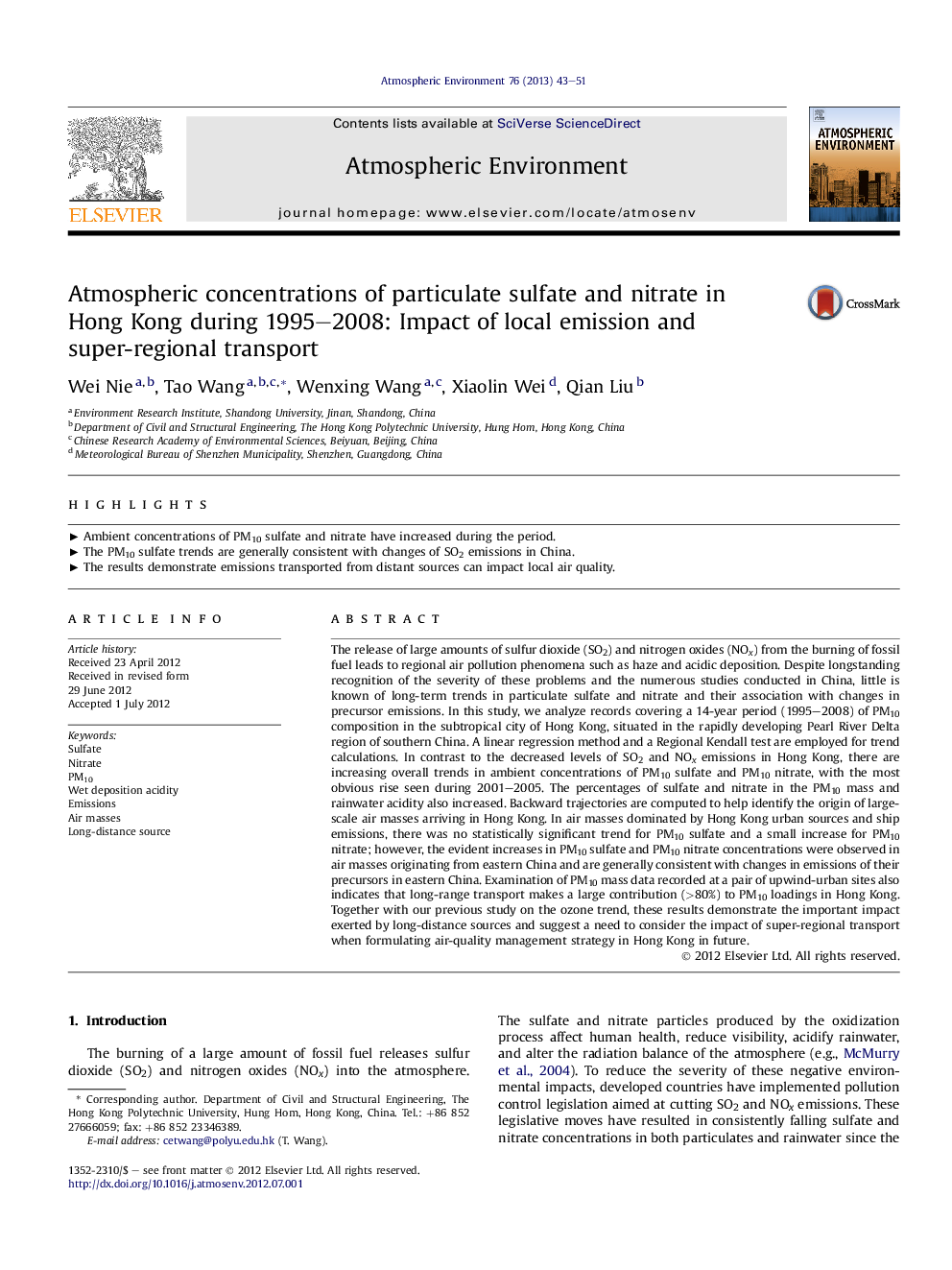| Article ID | Journal | Published Year | Pages | File Type |
|---|---|---|---|---|
| 4438249 | Atmospheric Environment | 2013 | 9 Pages |
The release of large amounts of sulfur dioxide (SO2) and nitrogen oxides (NOx) from the burning of fossil fuel leads to regional air pollution phenomena such as haze and acidic deposition. Despite longstanding recognition of the severity of these problems and the numerous studies conducted in China, little is known of long-term trends in particulate sulfate and nitrate and their association with changes in precursor emissions. In this study, we analyze records covering a 14-year period (1995–2008) of PM10 composition in the subtropical city of Hong Kong, situated in the rapidly developing Pearl River Delta region of southern China. A linear regression method and a Regional Kendall test are employed for trend calculations. In contrast to the decreased levels of SO2 and NOx emissions in Hong Kong, there are increasing overall trends in ambient concentrations of PM10 sulfate and PM10 nitrate, with the most obvious rise seen during 2001–2005. The percentages of sulfate and nitrate in the PM10 mass and rainwater acidity also increased. Backward trajectories are computed to help identify the origin of large-scale air masses arriving in Hong Kong. In air masses dominated by Hong Kong urban sources and ship emissions, there was no statistically significant trend for PM10 sulfate and a small increase for PM10 nitrate; however, the evident increases in PM10 sulfate and PM10 nitrate concentrations were observed in air masses originating from eastern China and are generally consistent with changes in emissions of their precursors in eastern China. Examination of PM10 mass data recorded at a pair of upwind-urban sites also indicates that long-range transport makes a large contribution (>80%) to PM10 loadings in Hong Kong. Together with our previous study on the ozone trend, these results demonstrate the important impact exerted by long-distance sources and suggest a need to consider the impact of super-regional transport when formulating air-quality management strategy in Hong Kong in future.
► Ambient concentrations of PM10 sulfate and nitrate have increased during the period. ► The PM10 sulfate trends are generally consistent with changes of SO2 emissions in China. ► The results demonstrate emissions transported from distant sources can impact local air quality.
